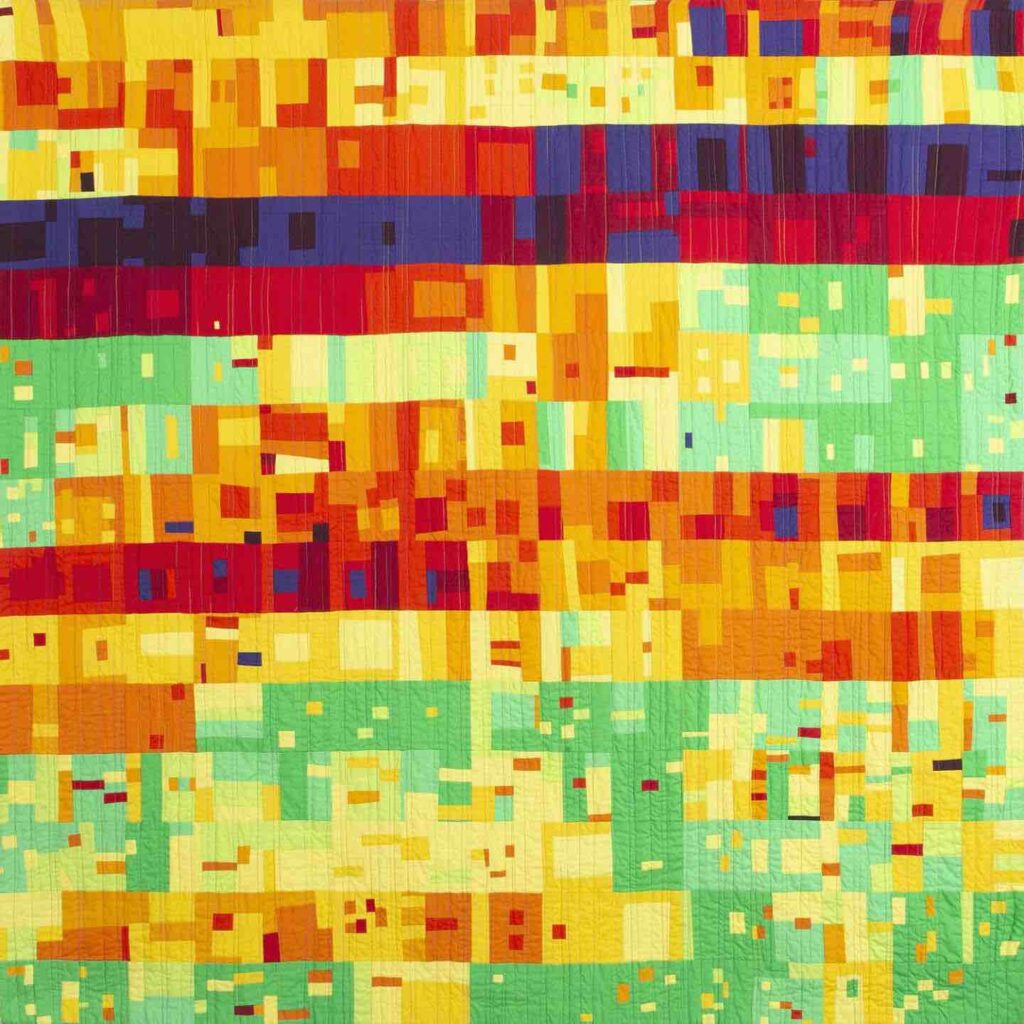
By Janis Mara | Special to The Examiner
12/15/23

“Miami-based artist Xavier Cortada, who has won national attention with his Underwater HOA project, described how he got Miami residents to look up their property’s elevation and make yard signs announcing their properties’ elevation.”
Artists, scientists, photographers and poets — many from the Bay Area — shared their work and raised their voices against climate change Thursday in a marriage of science and art at the Exploratorium in San Francisco.
In an innovative move, artists contributed to the Fifth National Climate Assessment, a major U.S. government scientific report on climate change released in November. Some artists shared their poems, quilts, photos and ideas Thursday night before a standing-room-only audience of more than 200.
“We spot fingerprints/of humans loading the dice/for extreme weather,” Jeremy Hoffman recited along with three of his other haiku as he opened the proceedings. Hoffman was a lead co-author of the assessment and co-edited “Dear Human at the Edge of Time,” a poetry anthology released as a companion to the report.
Before reading “Let Them Not Say,” one of her best-known climate-related poems, acclaimed Marin County poet Jane Hershfield said, “If we do all right in the future, people will look at this poem and say, ‘What was she worried about?’”
The report spells out the worries.
“The effects of human-caused climate change are already far-reaching and worsening across every region of the United States. Without deeper cuts in global net greenhouse gas emissions and accelerated adaptation efforts, severe climate risks to the United States will continue to grow,” the report said.
The report’s director and senior staff manager appeared as part of a panel discussing how art came to be included.
“We wanted to extend our reach and bring more people into the climate conversation, we wanted to highlight the human side of climate change, and we wanted to use the power of art to inspire people to action,” said Allison Crimmins, the report’s director.
“We didn’t know what to expect,” said Allyza Lustig, senior staff manager for the report. “We put out the call in October 2022, and three months later, we had more than 800 submissions from across the country — textile art, work about wildfire, photos, paintings.”
Ninety-two pieces were selected. They can be found on the assessment homepage under the “Art × Climate” tab.
“People connect with art in a way a technical report does not do,” Crimmins said.
Echoing this theme, “Some scientists are realizing that art can communicate things in a more emotional, real way. It’s a different process,” San Francisco quilt artist and panelist Lorraine Woodruff-Long said. Woodruff-Long was one of three artists on a panel focused on fire.
The blazing reds, yellows and oranges of her quilt, “San Francisco Air Quality 2020,” on display at the event, were inspired by data released during the North Bay wildfires in 2020.
The quilt was made as the fires raged from September 3 through the first rains of the season in November. Each 4-inch square was created from screenshots of the outdoor Air Quality Index of San Francisco captured on PurpleAir.com. Green stood for healthy air and yellow for not-so-healthy air, followed by orange, red, and maroon.
Twisted limbs of burned trees entwine in the photographs of Woodruff-Long’s fellow panelist Jenny Helbraun-Abramson of Sonoma County.
“The Tubbs Fire started on the anniversary of my husband’s death from cancer,” Helbraun-Abramson said. “I used photography to process his death.”
Oakland artist Adrien Segal rounded out the panel. While primarily focused on water, she won a place in the assessment with a data visualization of fire progression.
Coral Avery’s mostly blue-and-white beadwork piece, “The Seven R’s,” appears in the Tribes and Indigenous Peoples chapter of the assessment.
The “seven R’s” refers to indigenous values: respect, relevancy, reciprocity, responsibility, rights, and reconciliation through redistribution and relationships.
“Ideologies based on conquering indigenous people are not going to lead us out of (climate change),” said Avery, a Shawnee tribal citizen of Shawnee and mixed European descent. Kelsey Morales, assistant manager for the Tribes and Climate Change program at Northern Arizona University, also appeared on the panel.
On the final panel, artist Linda Gass discussed how she enlisted community members in 2015 to help create an installation of plastic markers delineating the former shorelines of wetlands in East Palo Alto before they were filled in with garbage.
Miami-based artist Xavier Cortada, who has won national attention with his Underwater HOA project, described how he got Miami residents to look up their property’s elevation and make yard signs announcing their properties’ elevation.
Amanda Hughes, a San Francisco artist, said she attended the event because she works in climate change herself.
“I was curious to see what other artists are doing and how we can all work together as a community to bring hope and spread the word about possible solutions,” Hughes said.
Read full article:
https://www.sfexaminer.com/culture/visual-arts/local-artists-climate-science-collide-at-sf-exploratorium/article_3504a99e-9b7a-11ee-881e-ff6a84241d89.html